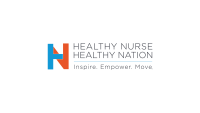Nurses can increase the use of a valuable healthcare tool.
Editor’s note: This is an early release of a web exclusive article for the January 2022 issue of American Nurse Journal.
Takeaways:
- Patient portals facilitate patient engagement in healthcare decisions, improve communication, and streamline care.
- Less than one-third of patients access patient portals to view their medical data.
- Nurses can improve patient portal use by explaining the benefits and providing education.
Digital technology, including patient portals, aid patient engagement in healthcare decisions, improve communication, and streamline care. Patient portals are particularly prevalent: A 2017 report from the Government Accountability Office noted that healthcare providers who participated in HHS’s Medicare Electronic Health Record Incentive Program offered nearly 9 out of 10 patients the ability to access their health information online. However, the report also noted that this valuable resource frequently goes unused—less than one-third of patients access patient portals to view their medical data. Nurses can help address this significant difference between patient portal adoption and use by explaining the benefits and helping patients overcome challenges. (See Portal benefits.)
Portal benefits
A systematic review by Dendere and colleagues found that many patients seek unrestricted access to their medical records and tailored health education. Patient portals can help provide this information. The study concluded that patient portals
- enhance patient communication with the healthcare team
- improve adherence to medications
- aid discovery of medical errors.
However, the most significant portal advantage may be its ability to help patients live healthier lives. Easy access to health data allows patients to view trends in health indicators (such as blood pressure and weight) and share their healthcare history with clinicians via secure communication.
Challenges
Several factors—age, race, ethnicity, education, health status, and health literacy—influence portal benefits. A review by Irizarry and colleagues found that non-white patients and those with fewer years of formal education are less likely to register for patient portals than the less vulnerable populations would. Other challenges to portal use include access, navigation, privacy concerns, and multiple portals.
Access to patient portals requires using a computer, tablet, or smartphone. Not all patients have these devices, or they may not be comfortable using them. Other patients may have physical disabilities (arthritis or visual impairments) that hinder technology use.
Portal navigation creates a barrier for many patients. When a platform interface appears complicated or requires users to click multiple tabs to access the information they need, ask questions of providers, or make appointments, patients may balk at using it.
Some patients voice privacy concerns related to portals. They fear that their health information won’t be secure when shared through the portal and refuse to use it. In addition, when patients have more than one provider, they may be using multiple portals. Each may work differently, and they may not “talk” to each other, which can present challenges when providers need to share information.
Easy-to-use platforms have intuitive interfaces that allow patients to easily request or cancel appointments, access forms, and receive recall notifications. Portal emails should provide access to health-related attachments, including test results, and automated alerts to let patients know when a new message arrives. Pratt notes that portals will stimulate more adoption and use when technology vendors develop manageable patient access and clinician operation. (See Portal apps.)
Portal apps
One of the most convenient ways for patients to access multiple portals via various devices is by using a portal app. These apps allow patients to communicate with different portals, helping them to organize all their health information from various sources. For instance, if a patient visits one hospital that’s part of a system with several clinics and hospitals that all use the same portal, such as “MyChart,” then when they visit another facility within the system, all their medical information is located within that portal.
Nurses’ role
Nurses’ can influence and reinforce portal use at every patient visit and by being responsive to patient communication. Portal success may require a culture shift, making patients aware of their right to participate in decision-making related to their health. Talk with all patients to increase awareness and explain portal features, including access to personal health information, lab results, immunization status, allergies, medications, and recent visits.
Portal promotion can include signage in provider offices and hospital rooms, as well as computer stations available in public areas for on-the-spot training. Some hospitals and clinics implement patient portal campaigns with nurses as super users. Nurses encourage patients to enroll in the portals, wear buttons to welcome questions from patients and their families, explain the portal’s privacy and security features, and demonstrate how to look up test results, send and receive provider messages, and request prescription refills.
When promoting the portal to patients, consider individual preferences and learning methods. A study by Irizarry and colleagues noted that scenario-based usability testing revealed navigation difficulties related to unfamiliarity with medical language. The authors recommended strategies such as assessing the needs of specific patient populations, considering health literacy, and enhancing usability to encourage portal access. In addition, demonstrating different electronic devices (laptops, tablets, and smartphones) allows patients to select the device they’re most comfortable using.
Cohen reported on a few studies in which researchers identified age disparities in user comfort with portals. For example, a study by Walker and colleagues of six hospitals affiliated with an academic medical center found that patients age 60 to 69 used an inpatient portal less than those age 18 to 29, and that Black patients used the portal less than White patients. However, keep in mind that each patient is unique and deserves individualized teaching.
The future of portals
Portals and the devices to access them continue to evolve. Devices available remotely monitor vital signs, glucose levels, and heart rates, which contribute to the integration of human connection and technology. Portals may soon transition into frictionless technology that include the patient’s whole health history with an easy-to-navigate personalized interface.
Artificial intelligence, natural language processing, and voice-activated digital assistants will enhance portal engagement. With disease-specific design and medical education, these enhancements will transform healthcare and how patients approach and use their health data.
Empower patients
Nurses occupy the frontline of patient communication. They play a critical role in encouraging patients to use portals by explaining the benefits, demonstrating their use, and providing reliable information about their security. Easy-to-use portals empower patients to access their personal health data and participate fully in their care.
Cristina Cassano is director of clinical informatics at eCare21 in Tampa, Florida and nurse faculty for the MSN informatics track at Western Governors University in Millcreek, Utah.
References
Centers for Medicare & Medicaid Services. Eligible Professional Meaningful Use Core Measures: Measure 7 of 17. August 2014. cms.gov/Regulations-and-Guidance/Legislation/EHRIncentivePrograms/downloads/Stage2_EPCore_7_PatientElectronicAccess.pdf
Cohen JK. Black, older patients less likely to use hospital patient portals. Modern Healthcare. July 17, 2019. modernhealthcare.com/information-technology/black-older-patients-less-likely-use-hospital-patient-portals
Dendere R, Slade C, Burton-Jones A, Sullivan C, Staib A, Janda M. Patient portals facilitating engagement with inpatient electronic medical records: A systematic review. J Med Internet Res. 2019;21(4):e12779. doi:10.2196/12779
Government Accountability Office. Health information technology: HHS should assess the effectiveness of its efforts to enhance patient access to and use of electronic health Information. March 15, 2017. https://www.gao.gov/products/gao-17-305
HealthIT.gov. Meaningful use. October 22, 2019. healthit.gov/topic/meaningful-use-and-macra/meaningful-use
Heath S. Patient portal use lagging despite strong provider support. Patient Engagement HIT. March 16, 2017. patientengagementhit.com/news/patient-portal-use-lagging-despite-strong-provider-support
Heath. S Patient portal adoption tops 90%, but strong patient use is needed. Patient Engagement HIT. July 31, 2018. patientengagementhit.com/news/patient-portal-adoption-tops-90-but-strong-patient-use-is-needed
Irizarry T, Dabbs AD, Curran CR. Patient portals and patient engagement: A state of the science review. J Med Internet Res. 2015;17(6):e148. doi:10.2196/jmir.4255
Jhamb M, Cavanaugh KL, Bian A, et al. Disparities in electronic health record patient portal use in nephrology clinics. Clin J Am Soc Nephrol. 2015;10(11):2013-22. doi:10.2215/CJN.01640215
National Learning Consortium. How to Optimize Patient Portals for Patient Engagement and Meet Meaningful Use Requirements. May 2013. healthit.gov/sites/default/files/nlc_how_to_optimizepatientportals_for_patientengagement.pdf
Pratt M. The future of patient portals. Med Ec. 2018;95(13). medicaleconomics.com/view/future-patient-portals
Walker DM, Hefner JL, Fareed N, Huerta TR, McAlearney S. Exploring the digital divide: Age and race disparities in use of an inpatient portal. Telemedicine and e-Health. 2020;26(5):603-13. doi:10.1089/tmj.2019.0065
Key words: Patient portals, Technology, Patient engagement, Patient education


















